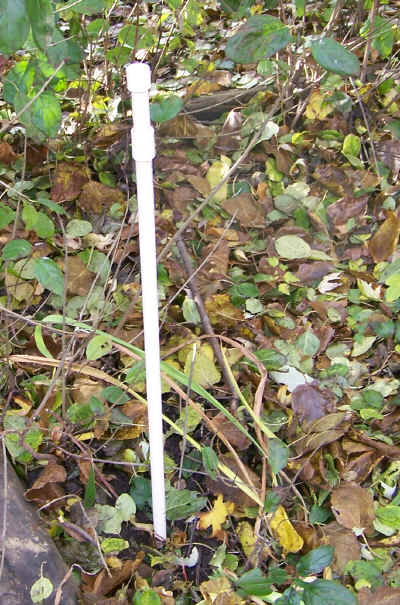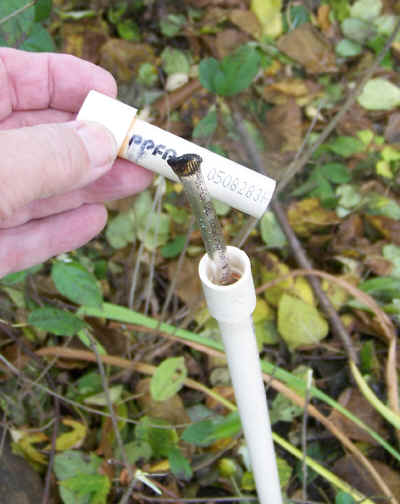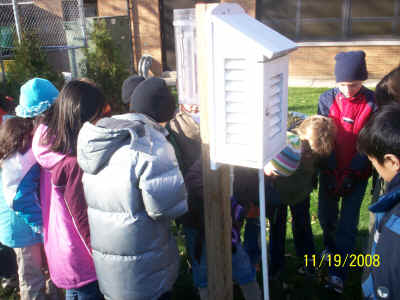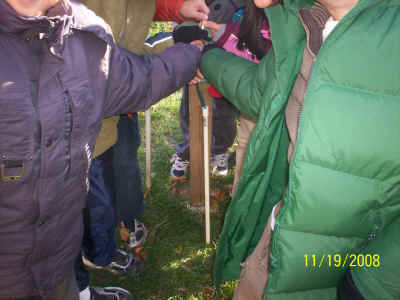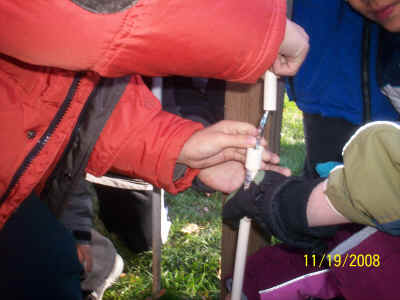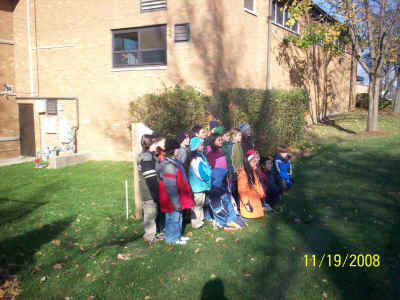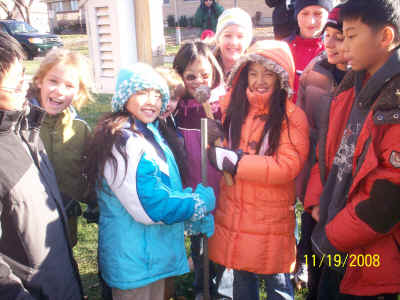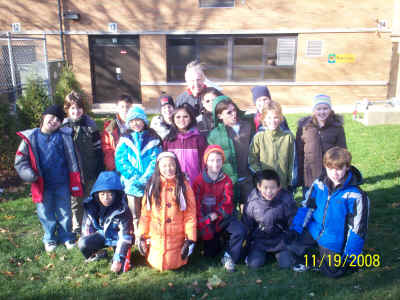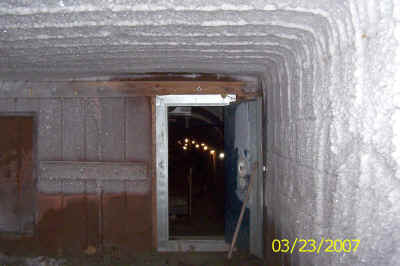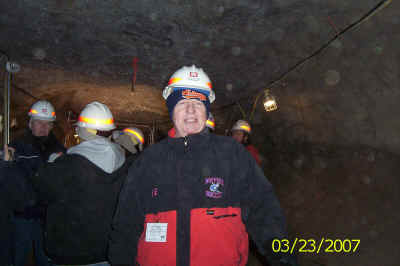The
following article recently appeared in the Fairbanks Daily-News Miner
about permafrost scientist Kenji Yoshikawa. If you want to see his "Tunnelman"
video, go to the site noted in the article or to YouTube.
Martha
Published October 13, 2008
By Christi Hang
FAIRBANKS Gotham City has Batman. Metropolis is under the protection of
Superman.
But never fear, Fairbanks, Tunnelman is making sure the fair city is safe.
Instead of stopping bank robberies or making sure no evildoers take the
city hostage, Tunnelman s goal is to teach Alaskans, especially students,
about the importance of permafrost.
Like his fellow superheroes, Tunnelman is elusive and his personal
appearances are rare. Fortunately, his adventures are documented. The
first episode of Tunnelman can be found on YouTube and the University of
Alaska Fairbanks permafrost Web site www.uaf.edu/permafrost.
But one can' t earn a living by hiding in permafrost tunnels. By day,
Tunnelman is Kenji Yoshikawa, a permafrost researcher at UAF. Yoshikawa
created his alter ego as part of an outreach program to teach students and
keep them interested in permafrost.
Education is a priority for Yoshikawa, who spent two years teaching before
pursuing his master s degree.
He never does anything halfway. He always takes a step further, said Ned
Rozell, a science writer who has known Yoshikawa since 2004.
Rozell said many scientists do outreach projects, but not many are willing
to shave their head and don a pair of tights to produce a video as part of
their outreach efforts.
Yoshikawa said he developed the idea of a superhero movie after visiting
villages and speaking at their schools. In addition to speaking at the
school, Yoshikawa sets up a permafrost monitoring station in the village
so students can take and record permafrost data. The data is then
transmitted back to researchers. The first site was set up at Pearl Creek
Elementary School, and there are now about 80 monitoring sites throughout
the state.
It increases and increases every year, Yoshikawa said.
Even with the high number of sites, Yoshikawa is still on the lookout for
more. He encourages teachers to contact him if they are interested in
having him install a monitoring site at their schools and speak to their
classes.
With 80 sites around the state, Yoshikawa spends a lot of his time
traveling. Rozell traveled with him on a 900-mile snowmachine trip from
Emmonak to Kotzebue to set up testing sites and talk to students in
villages. Rozell said it was not uncommon to see Yoshikawa drill holes and
talk to kids in multiple villages in a day.
He s driven. He moves faster than everyone else, and he gets stuff done,
Rozell said.
Rozell has written a half-dozen articles on Yoshikawa and his work and is
working on a book about his life for International Polar Year.
Yoshikawa grew up in Tokyo and was in middle school when he first saw the
images of Mars sent back from Viking Lander I. The permafrost that covered
the Martian surface fascinated him, and Yoshikawa said he wanted to visit
the planet.
The childhood dream shaped his career decisions.
I thought a scientist would most likely go there, Yoshikawa said.
Traveling is nothing new for Yoshikawa. He sailed from Japan to Alaska in
a 40-foot boat named the Hoki Mai. Yoshikawa and three other men sailed
from Hokkaido to the Kamchatka Peninsula and then to Nome before letting
the boat freeze near the coast of Barrow. His crewmates returned, but
Yoshikawa stayed.
There is little permafrost in Japan, and researchers were sent to places
where there were greater amounts to study, Yoshikawa said. Among his
research trips, Yoshikawa spent a month skiing from Antarctica s Patriot
Hills to the south pole.
But in 1994, Yoshikawa felt he was missing something in his work.
I thought, I m missing something big the ocean, he said.
He lived on the Hoki Mai for two years and studied subsea permafrost. He
met his wife, Arva Chiu, in Barrow. She was a doctor at the local clinic,
and the two were introduced by mutual friends.
The pair moved to Fairbanks, and Yoshikawa continued his permafrost
research.
In Fairbanks, he met Larry Hinzman, who was then a professor at the water
and environmental research center. He is now the director of the
International Arctic Research Center.
Hinzman was conducting the largest controlled forest fire in the nation
and hired Yoshikawa to be a liaison between American and Japanese
researchers.
He s driven by curiosity, Hinzman said.
Hinzman said Yoshikawa takes on projects regardless of funding because of
curiosity or passion for the project.
He s got a great sense of humor. He s very modest and very famous in Japan
because of his exploits, Hinzman said.
Rozell called Yoshikawa an adventurer. In addition to the traveling he has
done for work, Yoshikawa has taken a solo trip southward across the middle
of Australia, attempted to canoe up the Amazon River, attempted to ski
across Greenland and pushed a rickshaw across the Sahara with a partner.
Hinzman said Yoshikawa isn' t just passionate about his research, he also
is passionate about his outreach work. Permafrost outreach isn t a
priority when it comes to funding, but it helps develop a new generation
of engineers and scientists, Hinzman said.
He s a real role model for Alaskans, he said of Yoshikawa.
Rozell said Yoshikawa is good at a wide range of things. He is able to fix
a lot of equipment, he can interact with kids and he s good at putting on
a suit and tie for fundraising.
Both Rozell and Hinzman said Yoshikawa is likable. The trait has helped
him in his many endeavors, Rozell said. He s not afraid to ask for help,
which allows him to work faster and people enjoy helping him. He enlisted
a journalism student to help film the Tunnelman series and a singer to
help record the music for the episode.
He s a unique person in the science community, Rozell said. There is no
one like him.
Yoshikawa s work has taken him as far as Mongolia to measure permafrost
and talk to local students, and as close as North Pole Elementary School,
where he set up a frost tube for Betty Stroup s second-grade class.
When you get any opportunity like this, you have to stop and take
advantage of it, Stroup said.
Yoshikawa won Stroup s students over when he wrote their names in
Japanese. He broke down the concept and importance of permafrost to
second-graders and played the Tunnelman videos for them. The students were
drawn to the action-packed beginning that showed Tunnelman traveling by
snowmachine and dog team. The students paid attention to the whole video.
Yoshikawa said he developed the videos in hopes of reaching average or
below-average students and making science accessible to them. The first
episode took half of a year to complete, but Yoshikawa said he wasn t
thrilled by the ending. He still hopes to find something memorable and fun
to end the story.
Rozell said Tunnelman is evidence of the researcher s ability to put
himself on display.
He s more fearless than the rest of us, Rozell said.
© Fairbanks Daily News-Miner. All rights reserved. Reproduced with the
permission of Fairbanks
Daily News-Minerby NewsBank,
Inc.
|
